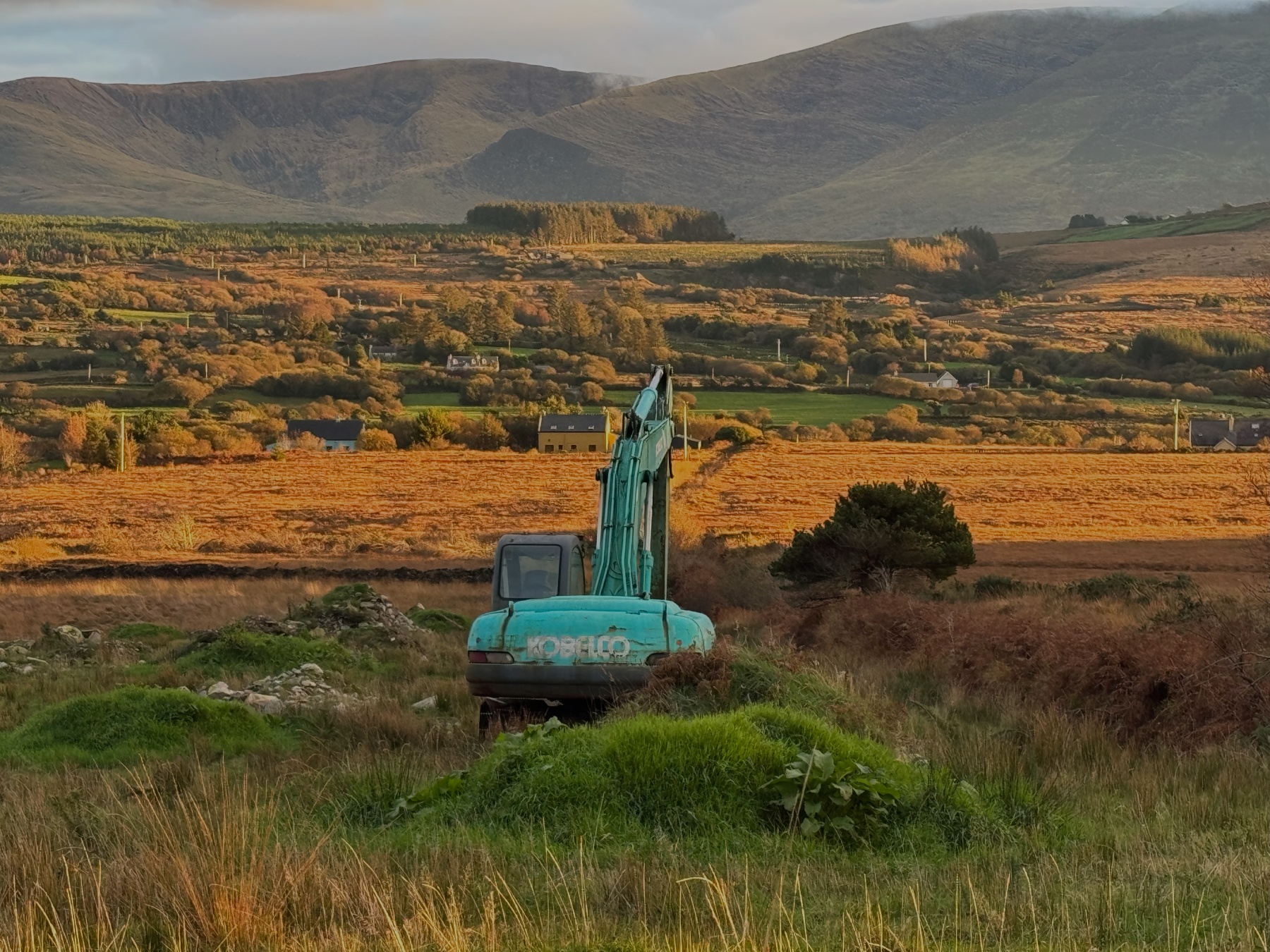
Farmers at the Forefront of Conservation – Sustainable Land Management and Peatland Conservation
By Breandán O Caoimh
Sign up for our monthly newsletter!
T he Brundtland Commission’s (1987)1 definition of sustainable development refers to the importance of harmony, balance, complementarity, and equilibrium between economic, social, and environmental/ecological objectives. In 2015, 193 countries, including Ireland, signed up to the United Nations Sustainable Development Goals (UNSDGs). Goal 12 obliges signatories to ‘ensure sustainable consumption and production patterns’, and Target 12.8 requires them, ‘by 2030, [to] ensure that people everywhere have the relevant information and awareness for sustainable development and lifestyles in harmony with nature.’2 Ireland’s boglands are places of production, and they have been integral to many upland communities’ livelihoods and culture for generations. Upland dwellers have an inter-generational awareness and understanding of the boglands. This discourse contends that while scientific research and technical know-how are important in devising a sustainable development trajectory for Ireland’s boglands and upland communities, there is a need for a greater emphasis on local, innate and traditional knowledge and systems.
Contrasting Perspectives
Despite the scientific imperatives that are increasingly warning us about the urgency of ecological protection and the conservation of our remaining natural resources, several detractors, including leading political figures, have claimed that the promotion of ecology will cause economic decline and reverse the progress that western societies have made over the past century. Other detractors have suggested that environmental goods are unaffordable; they argue that it might be nice to have a pristine environment and rich biodiversity, but that these outcomes are not possible in a modern, industrial economy. Some commentators take a utilitarian view; they see ecological goods as resources that can either be exploited (for human gain), or that they are collateral damage in the drive towards economic development.
In contrast, traditional societies, in Ireland and elsewhere, were keenly aware of the linkages between human well-being, agricultural production, biodiversity, community cohesion and ecological conservation.3 Most traditional societies, regardless of their diverse belief systems or spiritualities, understood that people were, and are, part of a wider ecological system.4 5 In Ireland, rural dwellers have been harvesting turf to heat their homes, for generations, and small-scale peat extraction has allowed bogs to continually grow and regenerate themselves.6 In contrast, large-scale, government-sponsored drainage projects and industrial-scale extraction generated short-term economic dividends but has significantly depleted one of Ireland’s most valuable ecological resources – one which has an intrinsic biodiversity and climate mitigation value that is of immense social and economic importance.7
Valuing Biodiversity, Valuing our Boglands
Our forebearers’ insights and understandings in respect of the symbiotic relationship between people and other elements of the biosphere finds echoes in contemporary research – across several disciplines. The United Nations Food and Agriculture Organisation points out that 40% of the world’s economy is based directly or indirectly on the use of biological resources. The Stern Report (2006) warned that the overall costs of climate change will be equivalent to losing at least 5% of global gross domestic product (GDP) each year, now and forever, and the benefits of strong and early action far outweigh the economic costs of not acting.8 A Government of Ireland Report on the economic and social aspects of biodiversity has estimated that Ireland’s biodiversity, including our boglands, generates productive output and human utility worth €2.6 billion / per year.9 The Irish Fiscal Advisory Council (2023) has estimated that a one-in-ten-year flooding event in Dublin could cost between €333m and €2.9 billion… [and] this could amount to between 0.6% and 1.1% of GNI (or between €1.6 billion and €3) billion per annum out to 2030.10 Indeed, Ireland’s local authorities are already investing millions of Euro in flood defences,11 while other strands of public policy continue to pursue a ‘business-as-usual’ approach that is demonstrably contributing to biodiversity loss and climate change, including flooding.
Local Systems, External Challenges
While there is a convergence between traditional, local, indigenous and scientific knowledge with respect to the need for, and importance of, environmental conservation, there tends to be a lack of understanding of the role of farmers and rural communities in safeguarding our ecology. Too often, rural households, including those who burn turf / peat to heat their homes, are unfairly demonised or castigated for contributing to greenhouse-gas emissions. While all people and institutions have to take responsibility for conservation, the finger-pointing to which many rural dwellers are being subjected, does not deal with the systemic weaknesses in the predominant industrial model, including in productivist agriculture. Moreover, it can serve to distract from the more substantial emitters of greenhouse-gases, including governments, the military, the arms industry and others who engage in greenwashing.12 Ireland’s economic model, which is underpinned by globalisation and is heavily reliant on foreign direct investment, will, unless reformed, require an increase in the production of energy – not least for da. Data centers are already consuming over a fifth of the electricity generated in Ireland, and they put a considerable strain on the national grid.13 The drive to feed the energy demands of data centers will exasperate the pressures on vulnerable upland ecosystems and on boglands – to both produce ‘green’ energy (from wind turbines) and to sequester the carbon arising from energy generation that uses fossil fuels.14 In, this context, it is useful to reflect on the implications for upland communities and those who have farmed them for generations and to recall the wise words of Viney (2003), who observed that,
“Farm landscape with great diversity of vegetation, field boundaries that offer good cover, open ditches and waterways, odd corners of deliberate ‘neglect’, are simply richer in species than intensively ordered rye-grass pastures partitioned by wire fences. Indeed, it is likely that, in post-glacial Ireland, the peak of habitat diversity and richness of species existed, not in the canopied primal forests, but in the countryside of small, mixed farms of less than a century ago.”15
Over recent decades, Ireland has experienced significant population growth. The population of the island declined from 8.2 million in 1841 to 5.1 million in 1971. Since then, thanks in large part to EU membership, the population has been growing. Today, the island has a population of over 7 million. It should be noted, however, that Ireland has become demographically imbalanced; while Greater Dublin and Belfast and other metropolitan zones have generally experienced population growth, many rural areas, especially upland communities, continue to experience either population decline or negligible growth.16 Ireland’s National Planning Framework (Project Ireland 2040) and Northen Ireland’s Regional Development Strategy, 2035 envisage more balanced regional development on the island, and there is an emerging body of evidence that indicates that the Covid-19 pandemic and associated move towards remote- and hybrid-working is contributing to some inward migration to rural communities.17
The depopulation of many upland communities, as documented by the Irish Uplands Forum, is leading to land abandonment and biodiversity loss.18 Many upland farms have experienced amalgamations (with other farms) and / or consolidation, and those who farm them now live at greater distances from their lands than was previously the case. These changes have been accompanied by new farming practices, including increased mechanisation and the draining of boglands and uplands. During the 1980s and 1990s, farmers, the State forestry company (Coillte) and private investors planted thousands of hectares of boglands with Sitka spruce forests. This non-native tree grows quickly in Ireland’s relatively mild and moist climate, but Ireland has failed to develop a strong woodland-based economy or community woodlands. Moreover, the nature of afforestation in Irelands’ bogs has caused environmental degradation, including the acidification of waterways19 and biodiversity loss.20 Traditional farming practices and rural communities have been forced to succumb to a drive for apparent progress – to the cost of people and the environment. More recently, several boglands, along Ireland’s west coast and in the Midlands, have been selected as sites for large-scale wind turbines – with almost all wind farms being owned by private companies, rather than by communities. Thus, while boglands are contributing to the generation of renewable energy, the economic benefits to rural communities have been limited, and there has been severe ecological damage and degradation in many instances.
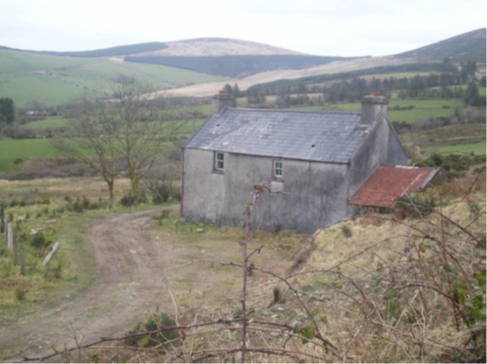
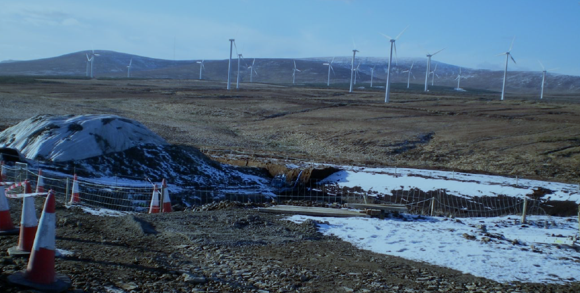

Land / farmstead abandonment (as shown above) is associated with monoculture (spruce), ryegrass pastures and the drainage of boglands. |

|
Policy Impacts on Upland Communities
Ireland’s uplands and their bogs are currently being affected by changes in the wider farming and agricultural policy landscape. The phasing out of milk quotas,21 from 2015, ushered in a drive for productivism among many dairy farmers. Public policy encouraged dairy farmers to increase their productive capacity; one government minister told farmers milk was ‘white gold’. In the drive to increase milk output, many dairy farmers reclaimed land, removed hedgerows and increased their outputs of artificial fertilizer – often at significant financial costs. Faced with a new ecological challenge, specifically the contamination of groundwater and associated risks to public health, the EU introduced a Nitrates’ Directive, which sought to curb the amount of artificial nitrogen that could be applied on the land. Irish officials managed to negotiate a derogation (for Ireland) from this directive, and it is not surprising, therefore, that successive Environmental Protection Agency (EPA) reports document a deterioration in Ireland’s water quality over recent years.22
While intensive dairying and arable farming, in Ireland, are concentrated in the lowlands and in the south and east of the country, increased productivism in those sectors and in other industries have adversely affected bogs and upland communities. As they anticipate changes in respect of the nitrates directive and other environmental measures, intensive farmers have been seeking additional lands, especially marginal lands, so they can continue with current practices, while claiming to be spreading (an unchanged volume of artificial) nitrogen over an increased area of land. At the same time, polluting industries are buying-up bogs and other perceived marginal lands, in order to off-set their carbon emissions. Thus, trading in nitrogen and carbon credits23 is adversely affecting upland economies as local farming families are being outbid (for any land) and displaced by corporate interests and the demand for energy. Consequently, the rich biodiversity that is associated with small-scale farming is also being lost, as abandoned plots are either being subjected to further afforestation, or they are, due to abandonment and neglect, experiencing encroachment by scrub and invasive species, such as rhododendron24 and montbretia25, with severe fallout for native flora and fauna.
Whilst these systemic changes in agriculture and land use have been taking place – to the detriment of boglands and most rural communities, especially those in the uplands, the European Union and Government of Ireland have imposed restrictions on turf cutting.26 It is hardly surprising, therefore, that many upland communities feel they are being penalised for burning turf to heat their homes or selling turf to non-farming neighbours and village dwellers, just as their ancestors had been doing for generations. They are being obliged to change inter-generational practices, while corporate entities are not being curbed.
Supporting Good Practices
While the dominant policy and economy trajectory, in Ireland and generally in the EU, promotes productivism and industrialisation, and makes token gestures towards the environment, some worthy schemes and initiatives have been put in place that are informed by both scientific and technical know-how and by the innate knowledge of upland farmers and communities. Successive EU LIFE programmes have sought to incentivise farmers to take environmental actions on their farms, including reducing stocking rates, creating and protecting ecological habitats and improving water quality. KerryLIFE was one such initiative. It operated between 2015 and 2020 in the Iveragh Uplands in County Kerry. Iveragh’s Uplands have been farmed for millennia, as evidenced by the wealth of archaeology they contain. The two river systems that drain these uplands, namely the Carragh and Blackwater, have among the most pristine waters in Europe, and they provide the ideal habitat for freshwater pearl mussel (Margaritifera margaritifera). In fact, almost half (46%) of Ireland’s freshwater pearl mussels live in these two river systems. The maintenance of this pristine ecosystem, which is emblematic of the system described by Viney (cited earlier in this article), has been made possible by the farming families of both catchments over hundreds of years.27
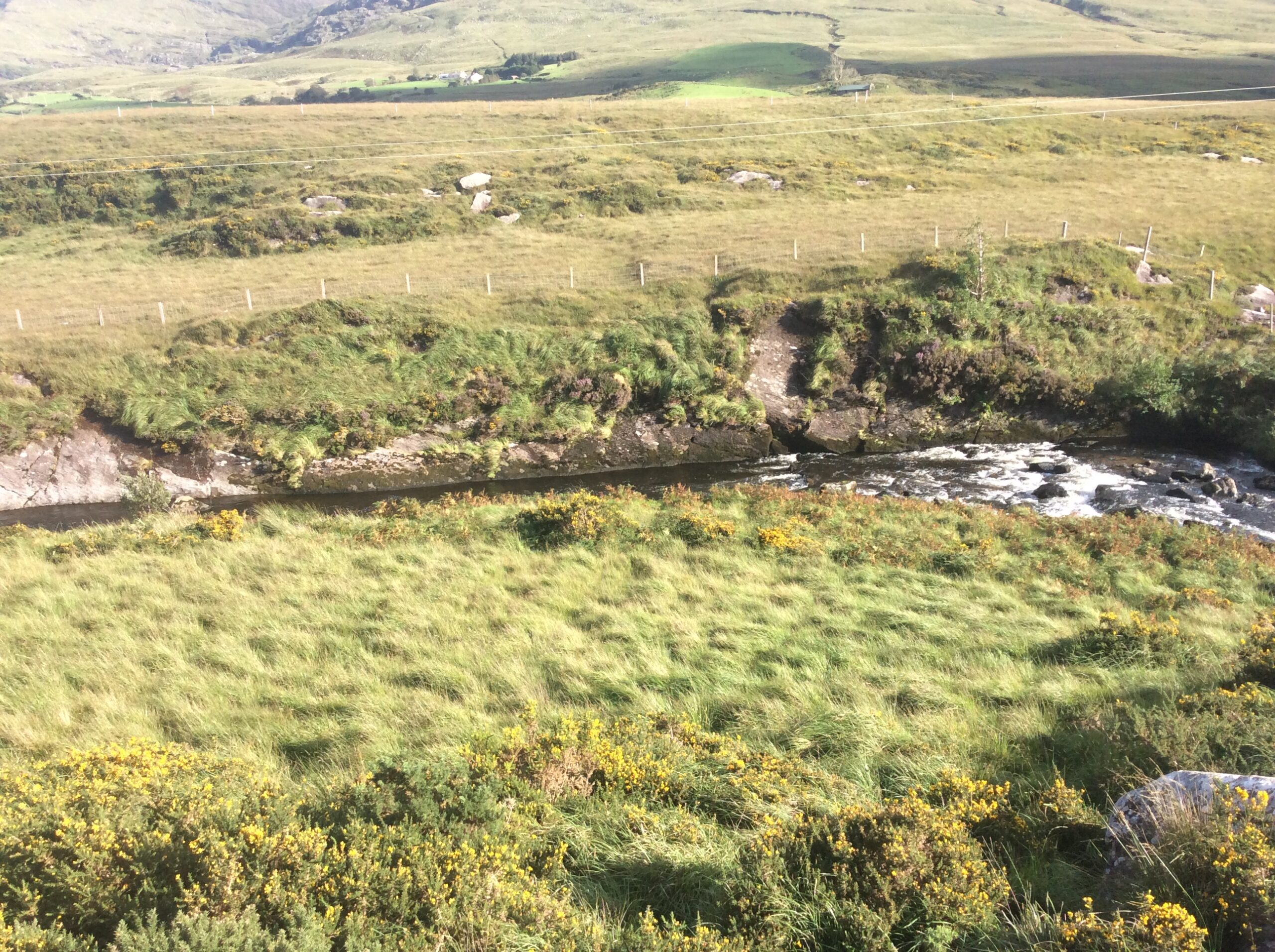
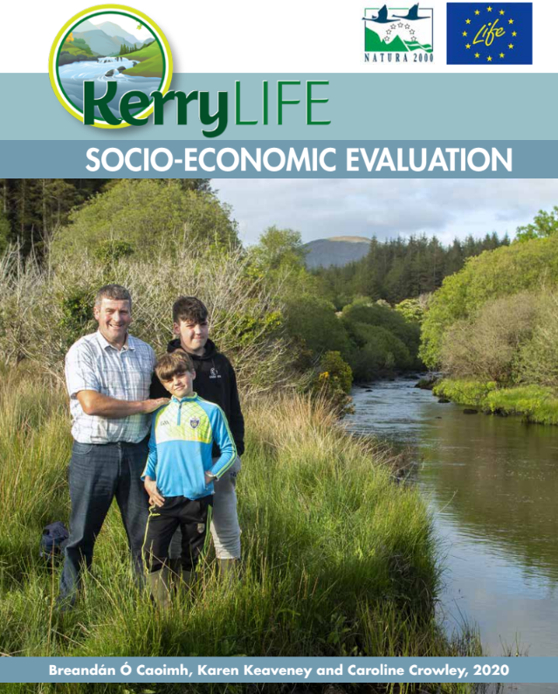
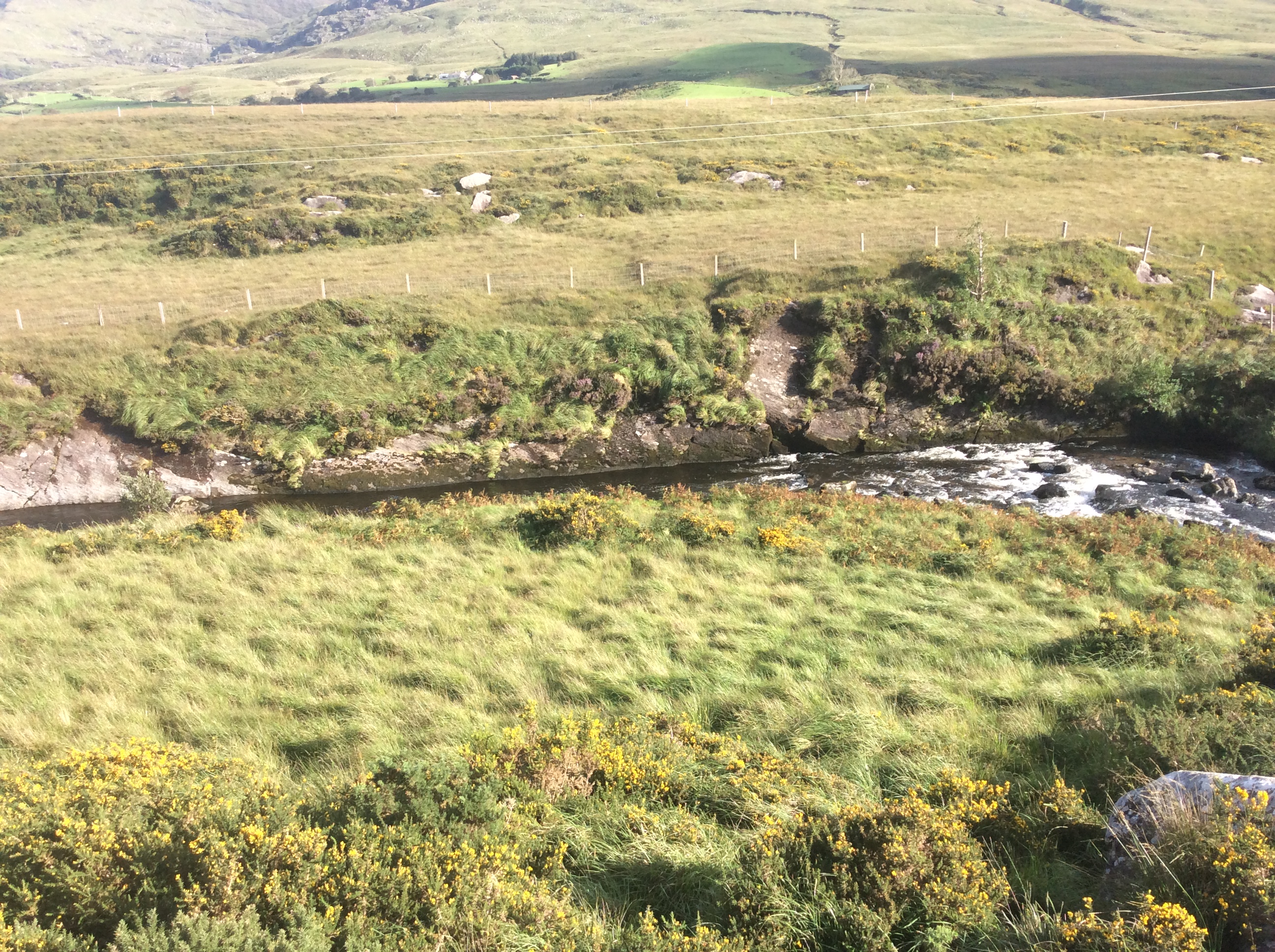
Works to protect watercourses |

|
Fifty farmers in both catchments participated in KerryLIFE, and they undertook on-farm works to further protect watercourses, increase biodiversity and preserve cultural landscapes.28 The evaluators lauded KerryLIFE for taking an area-based approach that enveloped two entire river catchments, and they noted that the project benefited from collaborative approaches and co-working on the parts of the participating farmers and the scientific team that was employed to run the project. The evaluation, which applied a socio-economic system framework, noted the significance of local embeddedness, community engagement and social activities in promoting goodwill, harnessing local knowledge and fostering dialogue that imbued scientists’ knowledge with local heritage and innate know-how. The evaluators29 observed that the project had yielded increased levels of social capital in the locality, and they recommended that KerryLIFE be continued, expanded and better resourced. Their observations of the triple bottom line (based on the three Ps of profit, people and planet) – as the core premise of the Brundtland Declaration – is manifest, in varying degrees, in several other agri-environmental schemes, including in the several of the European Innovation Partnerships that have burgeoned in Ireland over the past decade.
The KerryLIFE evaluation also noted, however, that while investments in high-nature-value farming30 deliver economic, social and ecological benefits, LIFE and other agri-environmental schemes are hamstrung by their stop-start nature, limited funding, narrow geographical application, and a lack of support among the main farming organisations and governments. They recommended the mainstreaming of high-nature-value farming across the EU’s Common Agricultural Policy (CAP) along with re-orientating national policy and the formation (including CPD) of government officials to ensure that policies and practices systematically respect, harness, embrace and reflect local and indigenous knowledge capital in tandem with scientific expertise – as envisaged under UNSDG Target 12.8.
Looking Ahead: Valorising the Local
Rural communities are continually in a state of flux. Between the 1960s and 1980s, many rural, village and small-town households, especially those who did not own their own tracts of bog, transitioned from burning turf to burning oil and natural gas to heat their homes. Thus, they transitioned away from a local fuel source, to one that had to be transported over several knowledge indicates that the burning of fossil fuels, including turf, is not sustainable. Thus, households are transitioning to electricity-based systems, and while some of Ireland’s electricity is generated on boglands, it comes from wind turbines, rather than from turf. In this new energy order, the main financial beneficiaries are the large-scale energy companies, construction contractors and steel manufacturers, rather than the households who used to supplement their farm incomes by selling turf to their neighbours. While the transition away from fossil fuels has ecological underpinnings, its promoters (mainly national government) need to take a wider systems approach and to consider, as well, the effects on local economies and social systems.
The traditional and small-scale harvesting of turf on Ireland’s boglands (as eloquently documented by Mary Nolan in a previous edition of Plantings31) was an important economic and social pursuit. While it was an extractive activity, it had only a limited adverse effect on ecology, and this stands in stark contrast to the deleterious effects of the large-scale industrial and commercial exploitation of Ireland’s boglands during the second half of the twentieth century. During that period, local knowledge and local systems were subjugated to exogenous interests, and there are parallels between the story of Ireland’s bogs and Irish agricultural production over the past seventy years. While external, exogenous, scientific knowledge predominated from the 1950s up to recent years, and public policy continues to advocate and pursue utilitarian approaches to all land types, a growing body of natural and economic scientists, as noted at the start of this article, are re-discovering and re-valorising biodiversity, and by extension, they are valorising the knowledge capital of farmers and other rural dwellers. In the words of Helena Norberg-Hodge, “a new human story founded on connection and diversity is emerging. It is called localization.”32
Residing in County Kerry, Ireland, Breandán O Caoimh is a human geographer, analyst, and social researcher working in sustainable community practices, rural issues, transnational border cooperation, and more.
References
1. Brundtland, G.H. (1987) Our Common Future Report of the World Commission on Environment and Development. Geneva: UN-Document A/42/427.
2. For further information about the UNSDGs, and specifically Goal 12, please see: https://www.globalgoals.org/goals/12-responsible-consumption-and-production/
3. Hunter, D.; Guarino, L.; Spillane, C.; and McKeown, P. C. (eds.) (2017) Routledge handbook of agricultural biodiversity. Routledge Environment and Sustainability Handbooks.
4. McLeod, F. , Viswanathan, L. , Whitelaw, G. S. , Macbeth, J. , King, C., McCarthy, D. D. and Alexiuk, E. (2015) ‘Finding Common Ground: A Critical Review of Land Use and Resource Management Policies in Ontario, Canada and their Intersection with First Nations.’ The International Indigenous Policy Journal, 6(1) . DOI: 10.18584/iipj.2015.6.1.3
5. Bullock, R., Zurba, M., Reed, M. G., & McCarthy, D. (2023) ‘Strategic Options for More Effective Indigenous Participation in Collaborative Environmental Governance.’ Journal of Planning Education and Research, 43(4), 841-856. https://doi-org.ucd.idm.oclc.org/10.1177/0739456X20920913
6. Manchan, M. (2022) STOP CUTTING TURF? I’D SAY ‘NO WAY!’: Turf-cutting is a centuries-old tradition, but the safeguarding of our carbon-capturing bogs is essential to preserving our future environment as a new documentary finds. The Irish Times, 2 Apr 2022.
7. Fogarty, P. (2017) Whittled away: Ireland’s vanishing nature. Cork: Collins Press.
8. Stern, N. (2006) Stern Review: The Economics of Climate Change. Cambridge University Press: Cambridge.
9. National Biodiversity Data Centre (website) BIODIVERSITY – a crisis in Ireland and globally. https://biodiversityireland.ie/biodiversity-a-crisis-in-ireland-and-globally/
10. Casey, E. and K. Carroll (2023). What climate change means for Ireland’s public finances – Long-term Sustainability Report: Supporting Research Series, Nº 1. Dublin: Irish Fiscal Advisory Council. Dublin.
11. Banc Ceannais na hÉireann / Central Bank of Ireland (2024) The Flood Protection Gap. Dublin: Banc Ceannais na hÉireann
See also, Dáil Éireann debate, 23 April 2024. Proceedings available at: https://www.oireachtas.ie/en/debates/question/2024-04-23/55/
12. Rajaeifar, M.A.; Belcher, O.; Parkinson, S.; Neimark, B.; Weir, D.; Ashworth, K.; Larbi, R. and Heidrich, O. (2022) Decarbonize the military — mandate emissions reporting. Spinger Nature, Vol. 116.
13. Jackson, A. (2024) ‘Power-Hungry Data Centres Put Pressure on Ireland’s Grid’ Data Centre Magazine. Available at: https://datacentremagazine.com/critical-environments/power-hungry-data-centres-put-pressure-on-irelands-grid [accessed: 20 January 2024]
14. Fitiwi, D.; Longoria, G.; and Lynch, M. Á. (2023) ‘Climate policy costs of spatially unbalanced growth in electricity demand: the case of datacentres in Ireland.’ Climate Policy, 24(5): 676–690. https://doi.org/10.1080/14693062.2023.2208066
15. Viney, M. (2003) A Living Island: Ireland’s Responsibility to Nature. Dublin: Comhar.
16. OECD (2023) Towards Balanced Regional Attractiveness in Ireland – Enhancing the Delivery of the National Planning Framework. Paris: OECD Publications.
17. McCafferty, D. et al. (2024) InPLACE: Investigating Planning, Place-Making and Commuting – the changing spatial relationship between homes and workplaces. Belfast & Maynooth: International Centre for Local and Regional Development.
18. Crowley, C. and O’Keeffe, B. (2019) A Profile of Ireland’s Uplands – an all-island study, highlighting their strategic importance. Irish Uplands Forum.
19. Environmental Protection Agency (2019) Water Quality in Ireland 2013–2018. Wexford: Environmental Protection Agency.
20. Irish Peatland Conservation Council. Effects of Afforestation on Peatlands. https://www.ipcc.ie/advice/peatland-management-diy-tool-kit/restoration-of-forested-peatlands/
Colwell, M. (2018) A forestry boom is turning Ireland into an ecological dead zone. The Guardian, 10 October 2018
21. The EU milk quotas were a policy instrument introduced by the European Union in 1984 to regulate milk production across member states. They aimed to address issues of overproduction and stabilize the dairy market, which had led to significant surpluses and financial strain on the EU budget. Under pressures from some member states, including Ireland, the EU phased out the quotas, and farmers could then produce as much milk as their resources permitted.
22. Environmental Protection Agency (2024) Water Quality in 2023 – and Indicators Report. Wexford: Environmental Protection Agency.
23. The Dictionary of Human Geography (2013) defines carbon trading as follows: An environmental policy in which atmospheric polluters pay for their emissions by purchasing ‘emissions credits’ from other polluters. Carbon trading is made possible by pollution caps set by governments and enforced by regulatory authorities.
24. Higgins, G.T. (2008) Rhododendron ponticum: A guide to management on nature conservation sites. Irish Wildlife Manuals, No. 33. Dublin: National Parks and Wildlife Service, Department of the Environment, Heritage and Local Government.
25. Department of Agriculture, Food and the Marine (not dated) Montbretia – Crocosmia X crocosmiflora – Invasive Plant Information Note. Dublin: Government Publications.
26. The European Union (Marketing, Sale, Distribution and Burning of Solid Fuels) (Amendment) Regulations 2022, implemented on October 31, 2022, prohibit the sale of turf via retail outlets, online platforms, and other media. However, individuals with traditional turf-cutting rights can continue to cut turf for personal use and may gift or sell it privately, provided it does not cause environmental harm.
27. For information about the freshwater pearl mussel and KerryLIFE, please see the following information sheet, produced by the National Parks and Wildlife Service: https://www.npws.ie/research-projects/kerrylife?utm_source=chatgpt.com
28. Kearns, A. (2022) ‘Farming For Freshwater: Saving Farms And Pearl Mussels Through The KerryLIFE Project’. Ecology for the Masses. https://natureaccordingtosam.wordpress.com/2022/06/01/farming-for-freshwater-saving-farms-and-pearl-mussels-through-the-kerrylife-project/?utm_source=chatgpt.com
29. Ó Caoimh, B.; Crowley, C. and Keaveney, K. (2020) KerryLIFE – Socio-Economic Evaluation. Available at: https://www.southkerry.ie/wp-content/uploads/2021/06/Kerrylife-Socio-Economic-Evaluation-Report.pdf
30. The term high-nature-value (HNV) farming acknowledges that the conservation of a large proportion of European biodiversity and important semi-natural habitats are dependent on low-input, mainly extensive farming practices. For further information, please see: O’Rourke, E.; Charbonneau, M.; and Poinsot, Y. (2016) ‘High nature value mountain farming systems in Europe: Case studies from the Atlantic Pyrenees, France and the Kerry Uplands, Ireland’ Journal of Rural Studies 46:47-59.
31. Nolan, M. (2024) ‘Where Turf Fires Burn and the Scent, Culture, and Memory of Life Come Alive.’ Plantings. December 2024
32. Norberg-Hodge H. (website) We are the regeneration. https://re-generation.cc/en/longread/helena-norberg-hodge/#:~:text=%E2%80%9CLocalisation%20is%20about%20shifting%20from,down%20to%20the%20community%20level.
Plantings
IssIssue 44 – February 2025
Also in this issue:
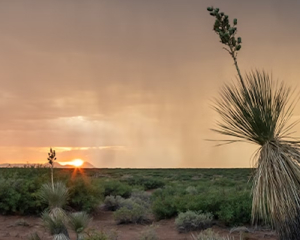
Scent Makes a Place
By Katy Kelleher
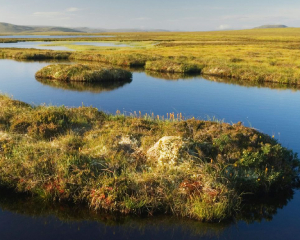
How Art Inspired by Peatlands Can Help Us Confront the Climate Crisis
By Benjamin Gearey, Maureen O’Connor and Rosie Everet
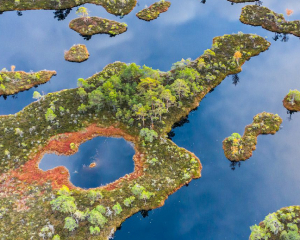
Peatlands worldwide are drying out, threatening to release 860 million tonnes of carbon dioxide every year
By Yuanyuan Huang and Yingping Wang
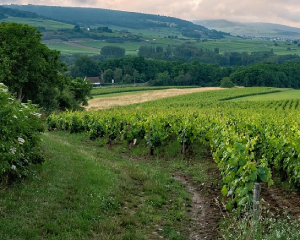
Ireland: Paving the Way for the Future of Sustainable Winemaking with Grape Hybrids in New Climates
By Gayil Nalls
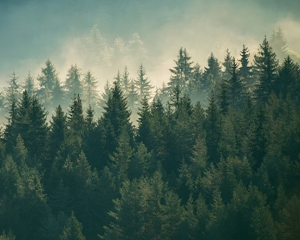
A Buffer Zone for Trees
By Syris Valentine
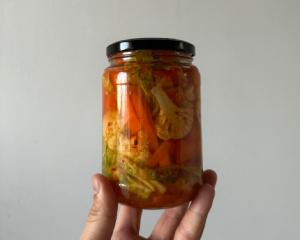
Eat More Plants Recipes:
Spicy, Tangy, Crunchy, Pickle Mix
By Ian Sleat
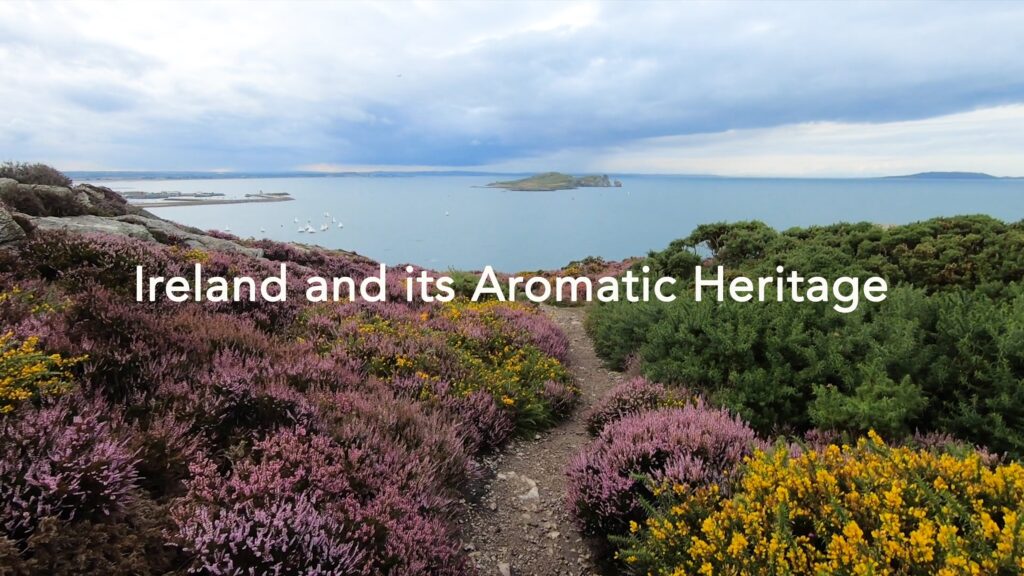
As Ireland transitions from the rich, smoky scent of peat-burning to a more sustainable future, its olfactory heritage is evolving. What will become the next iconic aromatic symbol of Ireland?
Click to watch the documentary trailer.

